When it comes to tall buildings the Sears Tower and the Chrysler Building are two American skyscrapers that instantly come to mind. Considered marvels of engineering when they were built, their legacies live on today. But, have you ever heard of the Singer Tower? The well known sewing machine company at one time had an intricate, Beau-Arts skyscraper in Manhattan that took influence from Second Empire architecture and was considered extremely modern in its time. So why does hardly anyone remember this building today?

The building was designed to be a marvel of engineering. At the time the planned 612-foot-tall structure was the tallest in the world. Construction was started in 1897 and it was completed in 1908. The Singer Tower was envisioned by architect, Ernest Flagg, who created it such that light could enter into the center of the skyscraper- something even many modern towers fail to accomplish.
The style of hallways recalls the great buildings of Europe and the embellishments found throughout the place highlighted Flagg’s need to incorporate Old World craftsmanship into a modern building. But, despite these nods to the grandeur of the 19th century, this design was the tallest in the world and remained so until the Metropolitan Life Insurance Company Tower set a new record at 700-feet-tall.
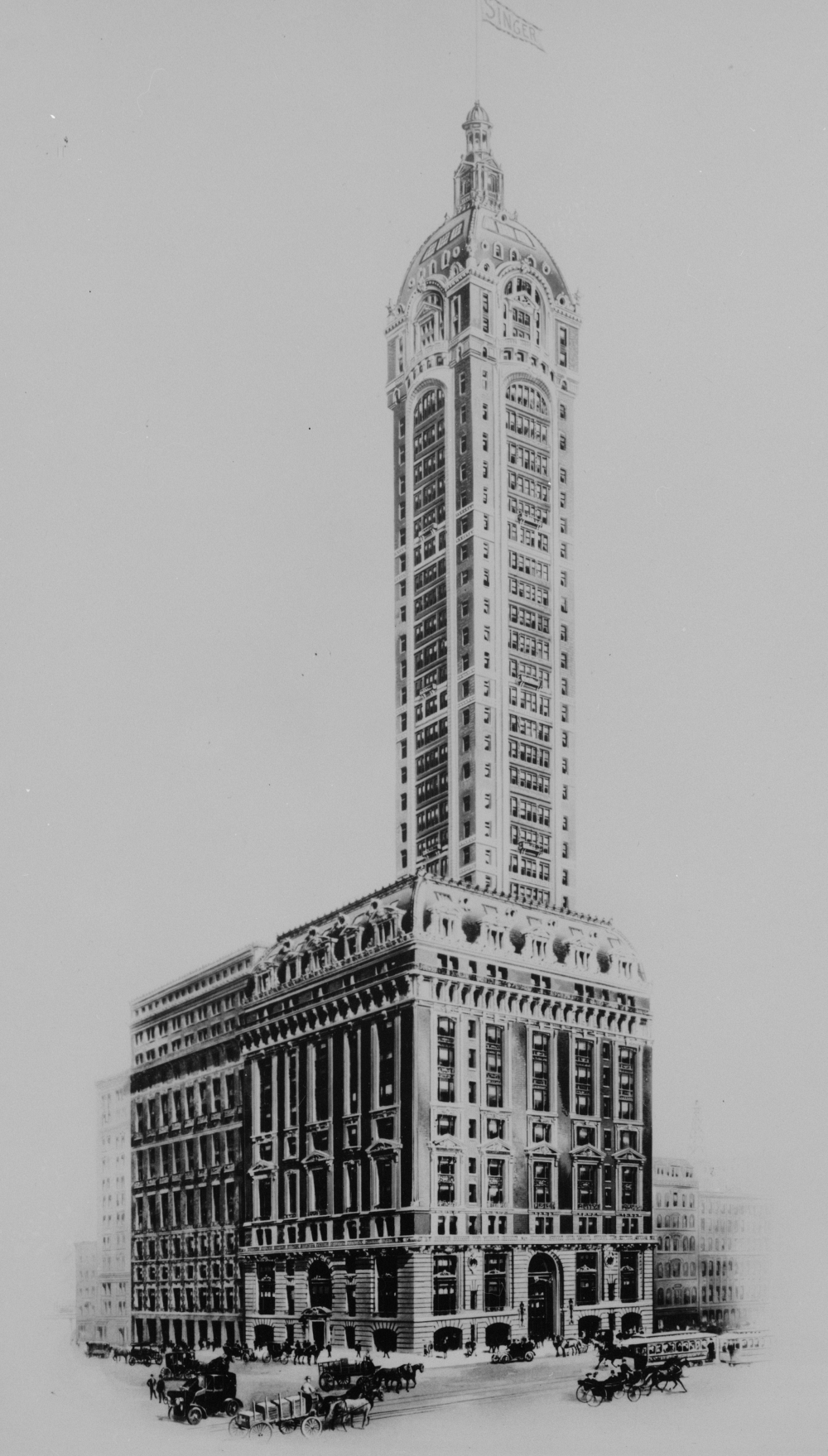
According to the authors of the book, King’s Color-graphs of New York City (1910), the tower utilized more than 14,000 electric lights and could accomodate up to 5,000 office workers. It weighed 18,365 tons and was intended to “withstand a wind pressure of 330 tons”.
The construction process was hindered by a lack of space and so many of the elements of the building were assembled off-site to save time and make the construction footprint smaller. There was also a constant rotation of trucks moving materials in and out of the construction site to compensate for a lack of staging space.
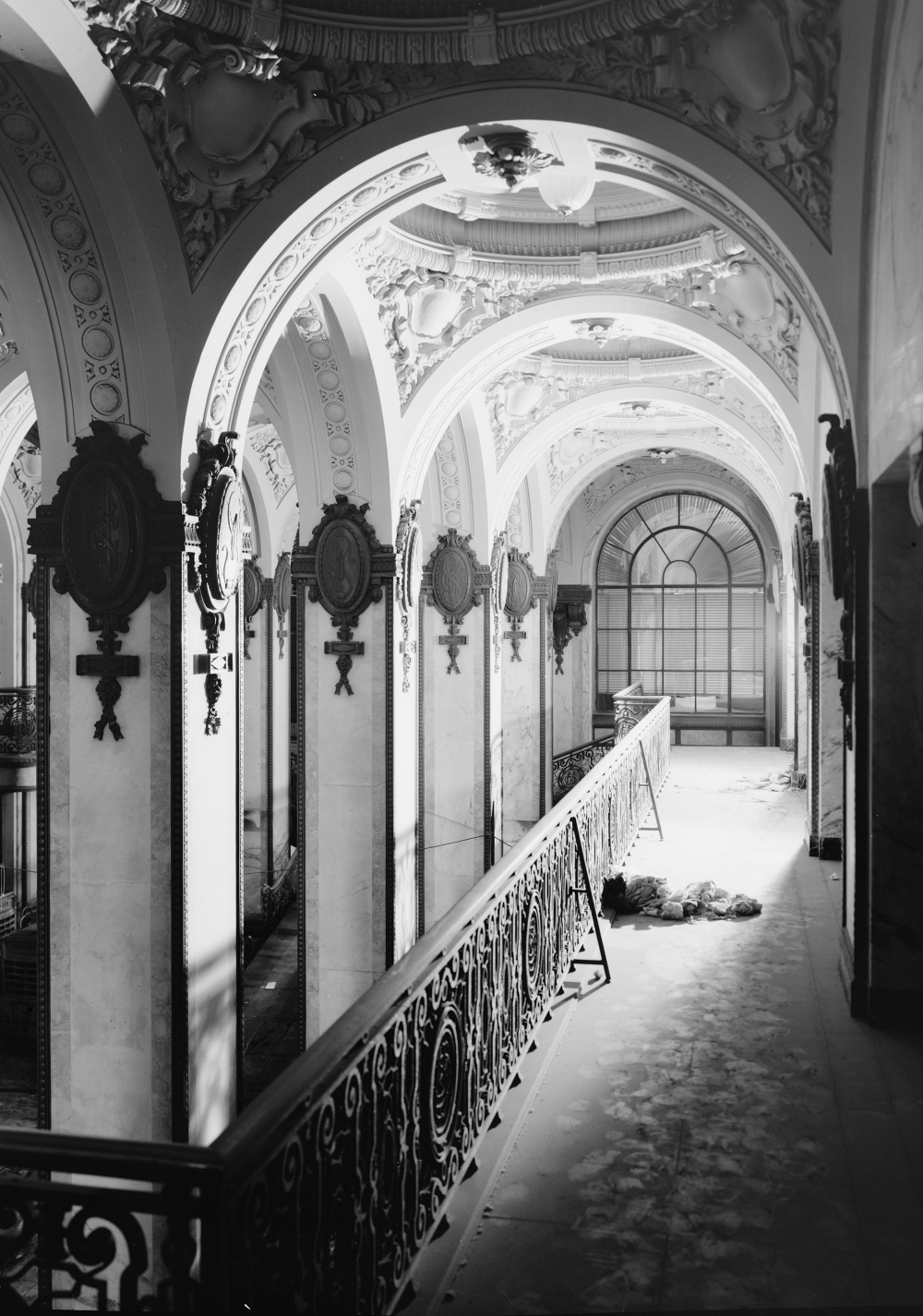
The tower was created in stages, with the substantial lower section made to a height of only 200 feet. To that the tower was added using a new and dangerous technique of drilling down into the bedrock 92 feet below the street level to place the massive steel support beams. This required workers to perform in a pressurized environment, something which was unheard of at the time.
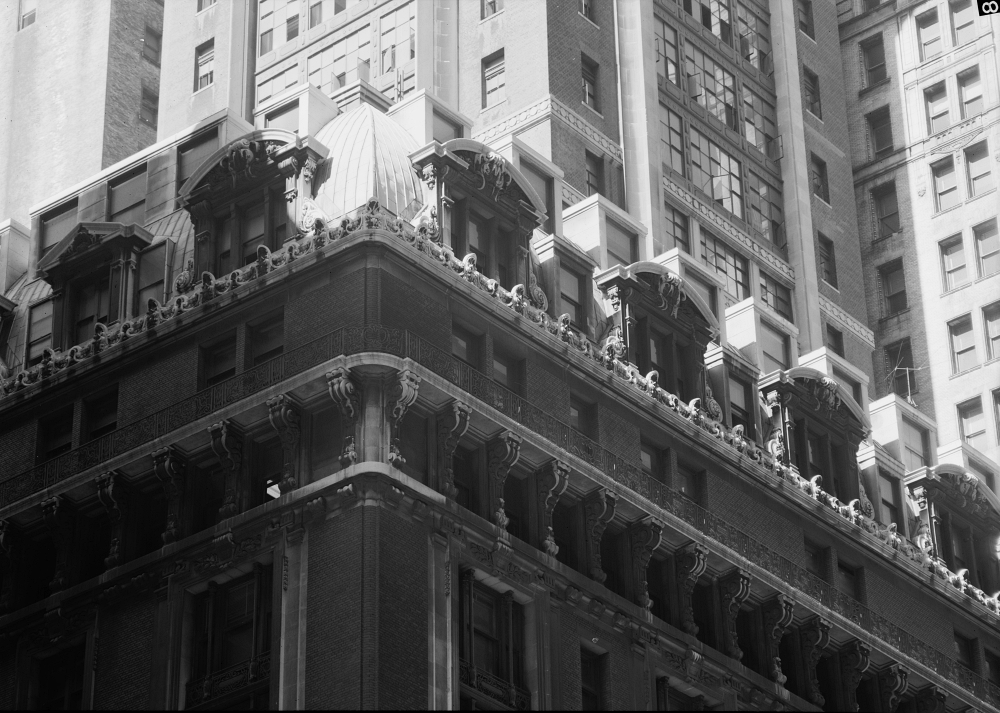
Inside the building there was central heating, cooled air, ice water dispensed from taps, and even a mini power plant in the basement. To heat the interior during the coldest months it took 2 tons of coal per hour. Each window frame, stair railing, and fixture was done in elegant style with designs of leaves and scrolls. A recurrent theme of oval crests emblazoned with Singer Company’s complex monogramed logo adorned many spaces within. In all a staggering 38 tons of bronze was used just on the decorative features of the Singer Tower.

The clocks in the structure were set from a master clock which wound itself automatically. A system of wires were run throughout the building that connected the smaller clocks to this master clock for accurate time keeping. A switchboard handled all internal and outgoing calls and the place even had high-speed elevators from the Otis Elevator Company.
To make work easier for the tenants a vacuum system to send mail and documents ran throughout the building. Though not the first building to have this feature it was the first to have the system operating 24 hours a day, which gives us an idea of just how advanced and business-savvy the design was.
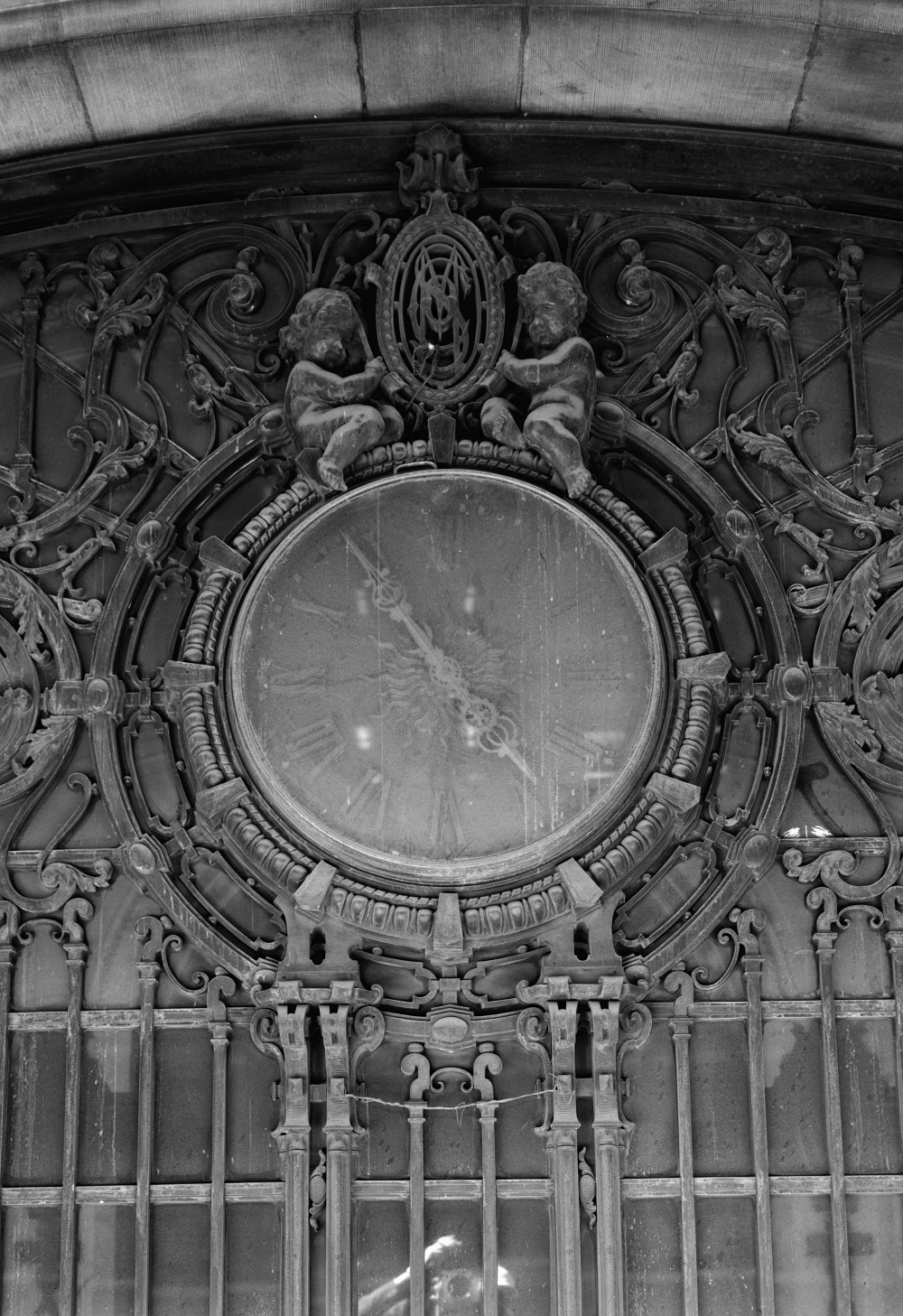
So what made this building fade into obscurity? As taller buildings began to overshadow the Singer Tower it lost its fame. In 1921 a failed sale of the building marked the beginning of a turbulent time. Later alterations to the interior, to the dome on the tower, and to the elevators and electrical workings fundamentally changed the character and appeal of the building.
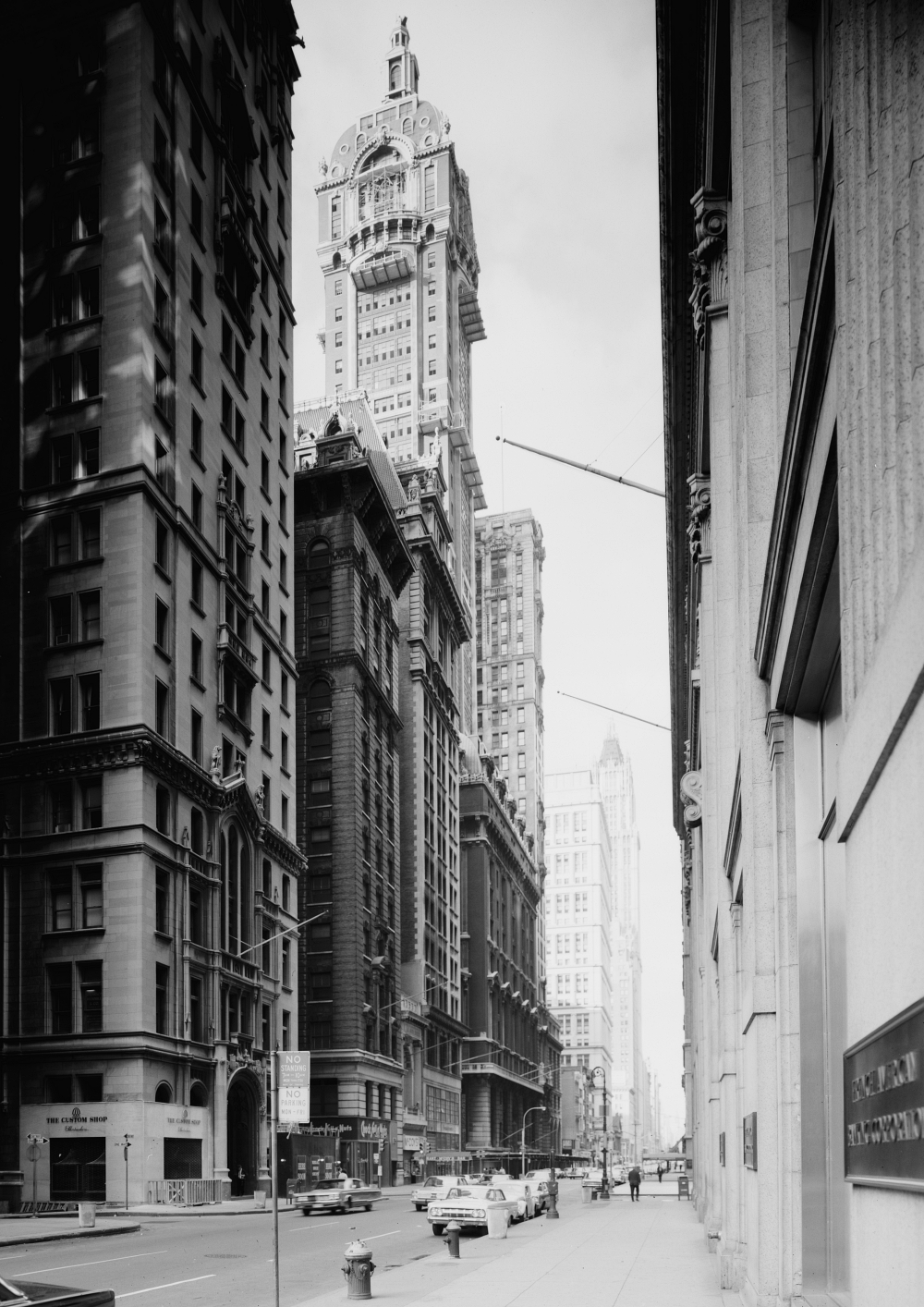
It was sold in 1959 and less than a decade later in 1967 the demolition process began after unsuccessful attempts to add it to the historical landmarks of New York City. The Singer Tower was completely torn down by 1969 and its place the US Steel Building (now called One Liberty Plaza) was erected from 1969-1973.
You can see the detailed plans of the building and learn more about the history of this forgotten skyscraper in the video below.
SKM: below-content placeholderWhizzco for DOT

